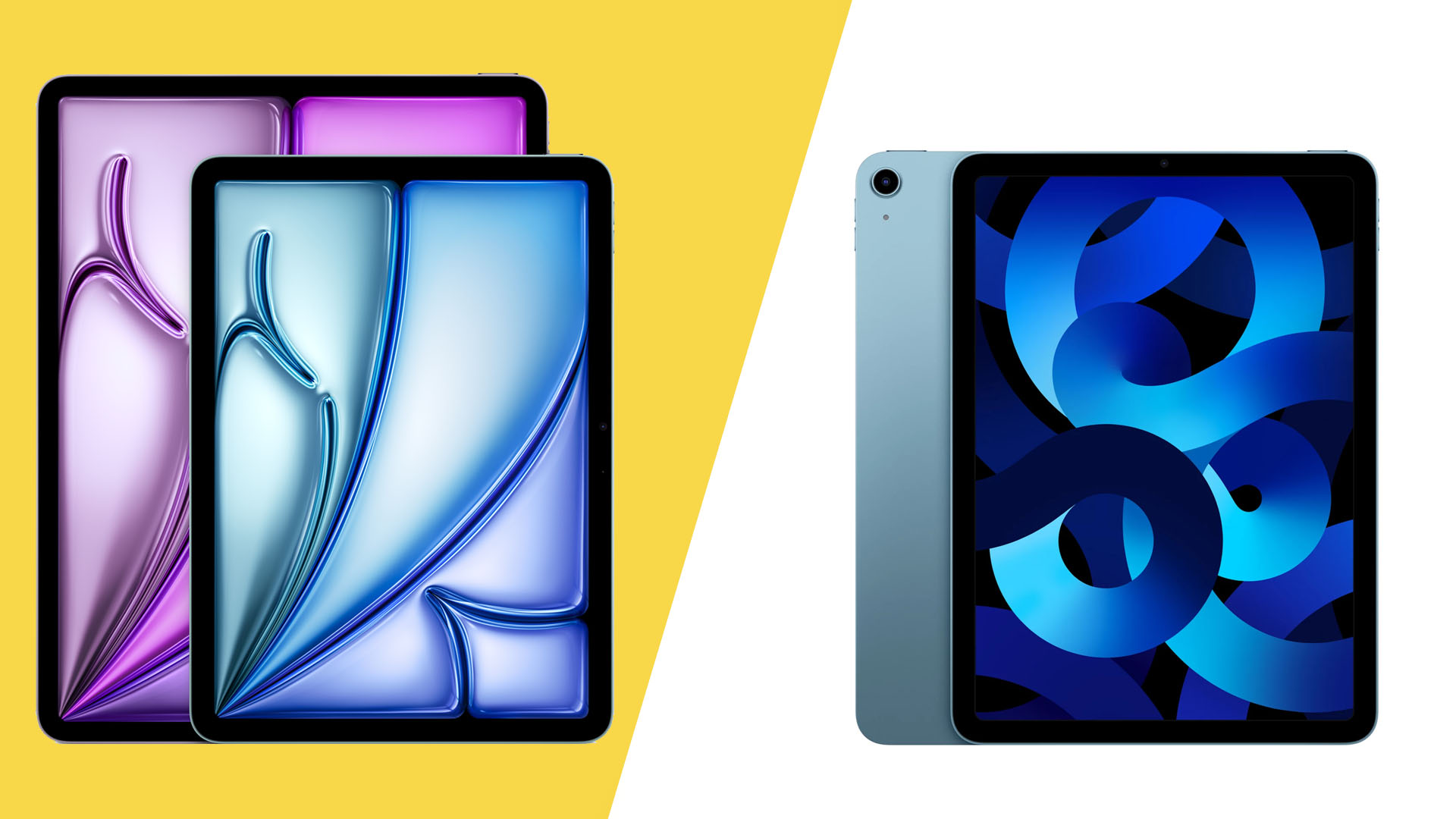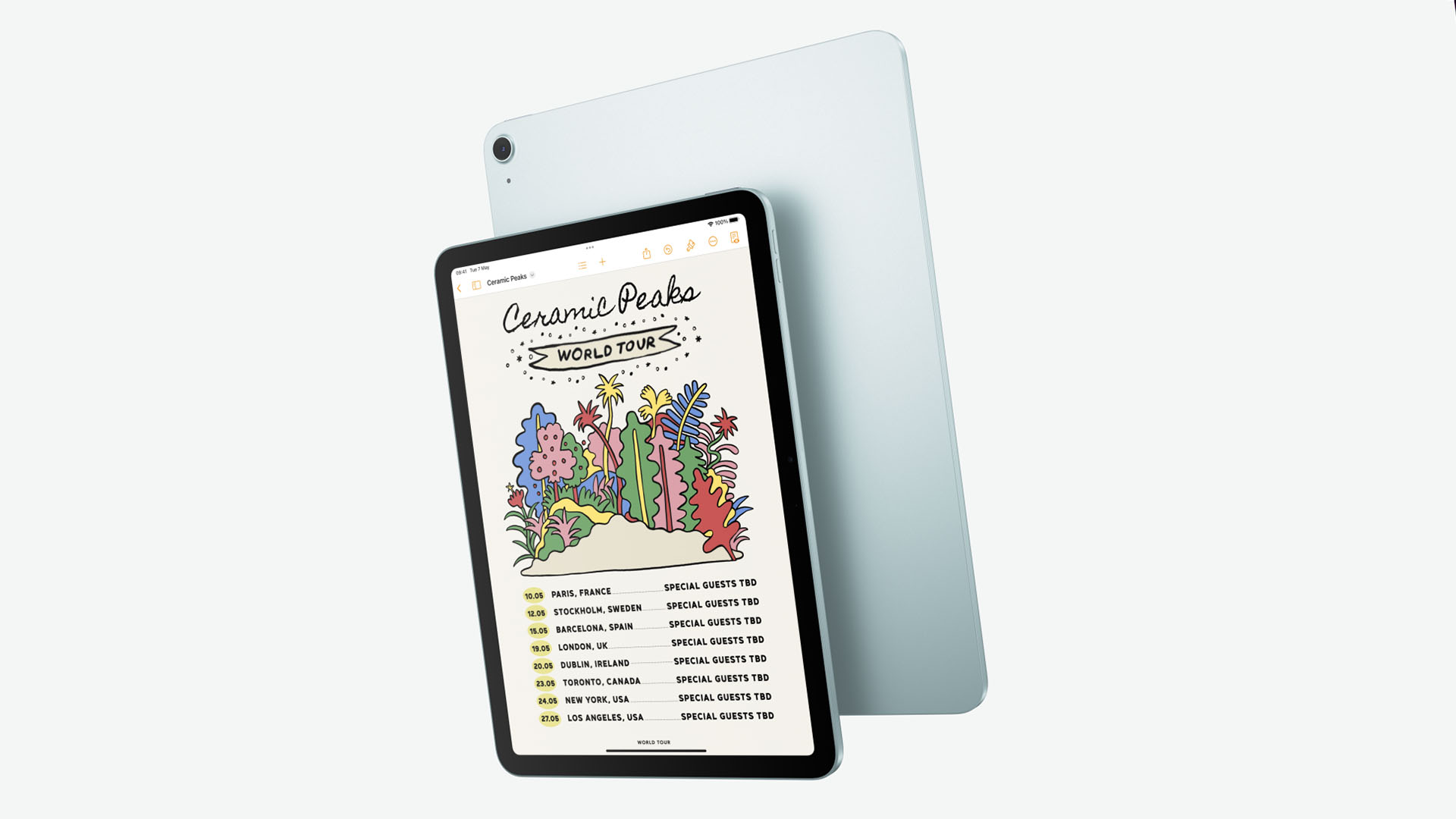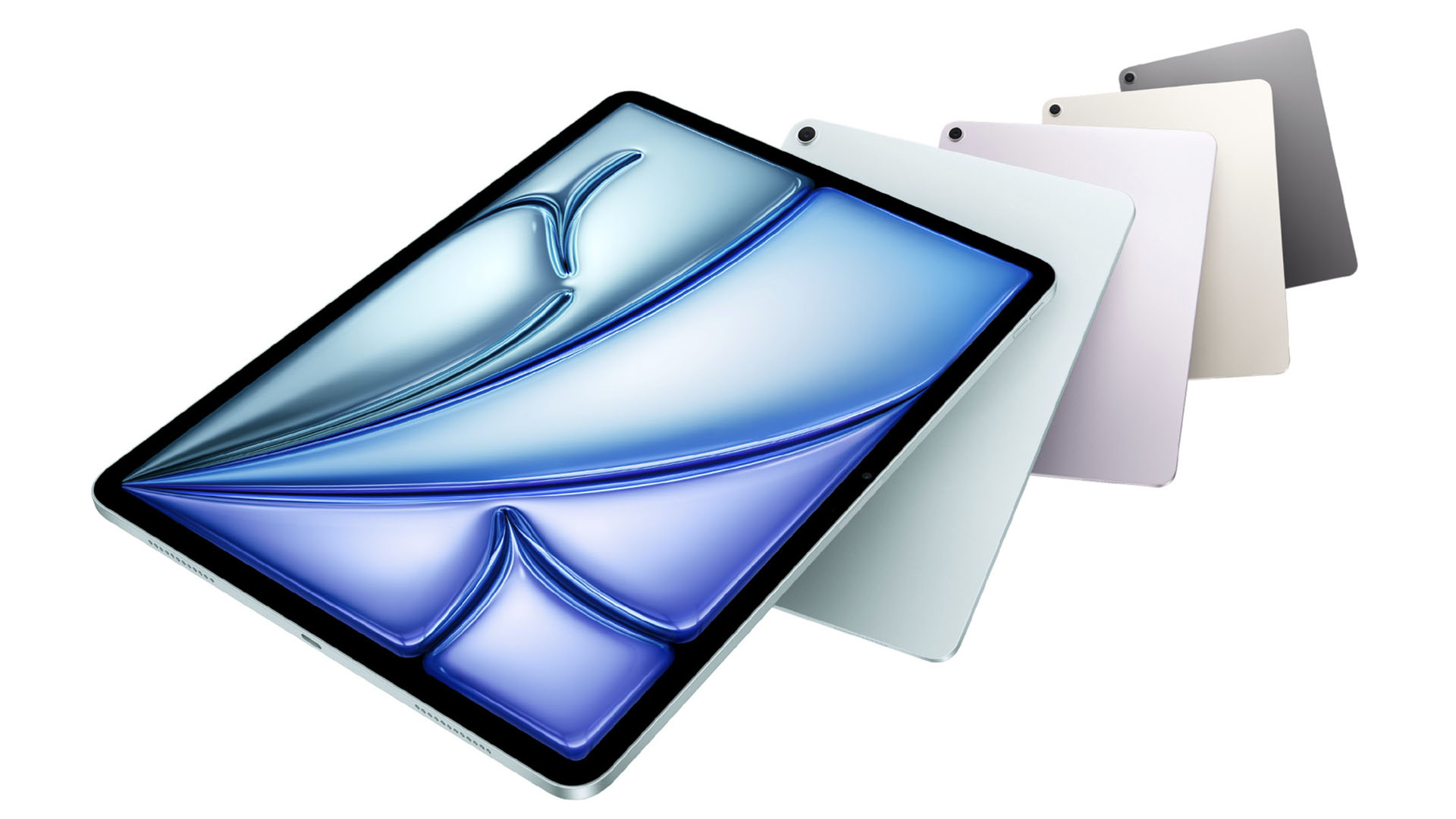
iPad Air, now in bigger sizes
The latest iPad Air doesn't change the formula too much, but it brings some key upgrades over its predecessor. For one, there's now a 13-inch version for fans of larger screens, but there are some extras under the skin as well. The processor has been boosted to an M2 chip too, and there are some new colors this time round.
The outgoing model
It might have just been handily usurped by the Air 6 and its big screened version, but the Air 5 is still an excellent slab of Apple tablet. The M1 remains a powerful processor, and the screen is going to be vastly the same as the new model. It might not be the newest, but you'll still find a capable device in the iPad Air 5.
Apple CEO Tim Cook says the May 2024 refresh of the iPad was the biggest the series has seen to date.
You might not get that sense if you only look at the iPad Air range, though. While we get a new 13-inch tablet, other upgrades are more ordinary, the usual stuff of an annual upgrade.
Like what? There’s a new processor, if not the latest Apple makes these days. The front camera now sits in a more webcam-like position. That's handy.
The 2024 iPad Air 6 also supports a new Apple Pencil, which should make it a significantly more intuitive graphics tablet.
This new generation should be a hit for graphic artists and those who have wished for a larger iPad that doesn’t cost a fortune. But do current iPad Air M1 owners need to upgrade? We’re not so sure about that. Here’s the breakdown.
Specs
Design

There’s very little difference between the 11-inch versions of the iPad Air from the outside. The dimensions are the same. Our new version gains one gram of weight.
The look of the camera housing remains the same too. Of course, there’s a whole new model, though.
A 13-inch version brings the iPad Air closer to a sort of parallel with the iPad Pro, just without some of the most expensive stuff packed in.
It’s exactly the same thickness as the 11-inch tablet, 6.1mm, and weighs 33% more at 617g. This is about what we’d expect judging by previous models of this size. And Apple hasn’t been too bold with the styling of the newer size. It just looks like a larger take on the 11-inch one.
Processor

Two years on, the iPad has been bumped up from the Apple M1 processor to the Apple M2.
These are both 5nm architecture chipsets, and the Apple M2 represents around an 18% increase in CPU performance over the older chipset, and brings a more impressive-sounding 30-40% boost to graphics performance.
It has an all-around more beefy graphics processor, in fact, one with 10 cores in place of the previous eight.
We’ve seen a lot of impressive gaming feats on Apple gadgets recently, including Resident Evil Village. Such demanding titles are likely to run significantly better on the 2024 iPad Air than the 2022 one.
Are you a Wi-Fi nerd? You'll also be happy to hear the new iPad Air gets a bump from Wi-Fi 6 to Wi-Fi 6E. It supports transmission over the 6GHz band as well as the usual 5GHz and 2.4GHz ones, and increases theoretical maximum transmission speed.
You'll need a Wi-Fi 6E router to make the most of it at home, but it's a welcome nugget of future-proofing.
Display

The iPad series has become a playground for some of the most advanced display tech in the world. Bad news: the iPad Air doesn’t get to play around with any of it.
All versions of the iPad Air, from 2022 and 2024, use high-quality but familiar IPS LCD panels. They have universal backlights, which limit their contrast and black levels.
And while you’ll see the newer iPad Air described as “11in” it’s actually the same size as the old 10.9-inch version from 2022. As the Apple website says, the screen is “measured diagonally as a rectangle, the 11‑inch iPad Air is 10.86 inches. Actual viewable area is less.”
These are simply solid mid-range tablet displays, with an anti-reflective layer, good DCI P3 color coverage, and a fully laminated construction. This is where the touchscreen and panel are fused together, reducing internal reflections and the sense the screen image sits behind the screen glass rather than right on (or near) the surface.
The new 13-inch iPad Pro does get one slight upgrade. Its maximum brightness is 600 nits, while the older and newer 11-inch ones are limited to around 500 nits.
Camera

The two generations of iPad Air use the same, or very similar camera hardware. But there is one important change here.
Apple has moved the front camera from the short side of the iPad Air to the long one. It is a switch from portrait orientation to landscape, and that’s a particularly important shift in the larger 13-inch tablet.
The larger a tablet gets, the more we typically want to hold it on its side, treating it more like a small TV or laptop screen. Try to do that while making a video call on a portrait tablet and you'll look all wrong on the other end.
Want the tech specs? The front camera has a 12-megapixel sensor and f/2.4 lens. It can capture video at up to 1080p resolution, 60 frames per second. Still no 4K resolution here, but both generations support Center Stage, where the view is cropped to follow you around the room during video calls.
The rear camera has a 12-megapixel sensor and a faster f/1.8 lens, and is capable of 4K video at 60 frames per second. You should expect similar image quality results here across generations, although Apple does say HDR is improved for stills. The upgraded processor takes us from Smart HDR 3 to Smart HDR 4 processing. Don’t expect miracles: recent iPhone cameras are better.
Colors

On paper your color options for these two iPad Air generations are similar. Old option "pink" is out, for now at least, while both versions come in Starlight, Space Grey, Purple, or Blue.
However, when you take a closer look you realize Apple has reformulated the more interesting-sounding color tones.
Purple and Blue are more muted this time around, particularly the blue. This may make the little nicks and scratches our iPads tend to accrue over the years less obvious, but this one is most likely just down to Apple deciding a stylistic tweak was in order.
Accessories

If you have little interest in a larger iPad Air, the biggest upgrade here might not be to the tablet itself, but the Apple Pencil instead.
The 2024 iPad Air gets a new one, the Apple Pencil Pro in place of the Pencil 2nd Generation the iPad Air M1 supports.
There are three key new features here. The Pencil Pro now offers Find My, the system that lets you find your misplaced Apple devices. It’s about time: the Apple Pencil is one of the easiest-to-lose things we own.
There’s no word of what wireless tech the Pencil Pro uses to make this work, but other Apple gadgets typically use Apple U1 or U2 chipsets.
The Pencil Pro also has a “squeeze” gesture, powered by a new pressure sensor in the stylus’s barrel. You’ll feel feedback when this is fired off thanks to a haptic motor up at the other end of the pen.
Perhaps most notably for the digital artists out there, the Pencil Pro supports something called Barrel Roll. This lets a Pencil sense when the stylus is turned in your hand, allowing for subtle but powerful transformations of digital brushes. Procreate showed this off in action, using a hand motion to thicken up a brush. Anyone want to learn digital calligraphy?
As ever, you have no choice of stylus generation when you buy. While the very basic Pencil USB-C can be used with either model, only owners of the 2024 iPad Airs and iPad Pro M4 can use the Pencil Pro. iPad Air M1 users can only get the Pencil 2nd Generation.
Should you upgrade?
This new 2024 iPad Air series is of most interest to those who always wished there was a more approachable 13-inch iPad than the iPad Pro.
Stick to the 11-inch versions and there’s not a massive amount to separate the 2022 version and 2024 one. If anything, the changes to the Apple Pencil stylus might be more impactful than those to the tablet itself.
Sure, we love the shift to a landscape front camera, and the performance increase from an Apple M1 to M2 processor is significant. But are most people left hankering for more power with iPad OS in its current very tablet-style state? We’re not so sure about that.







